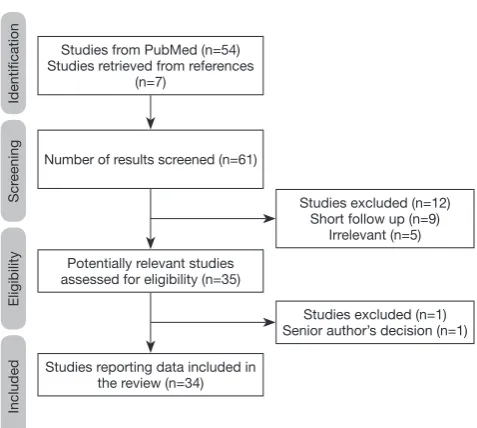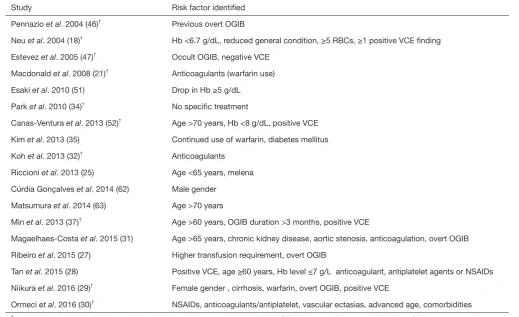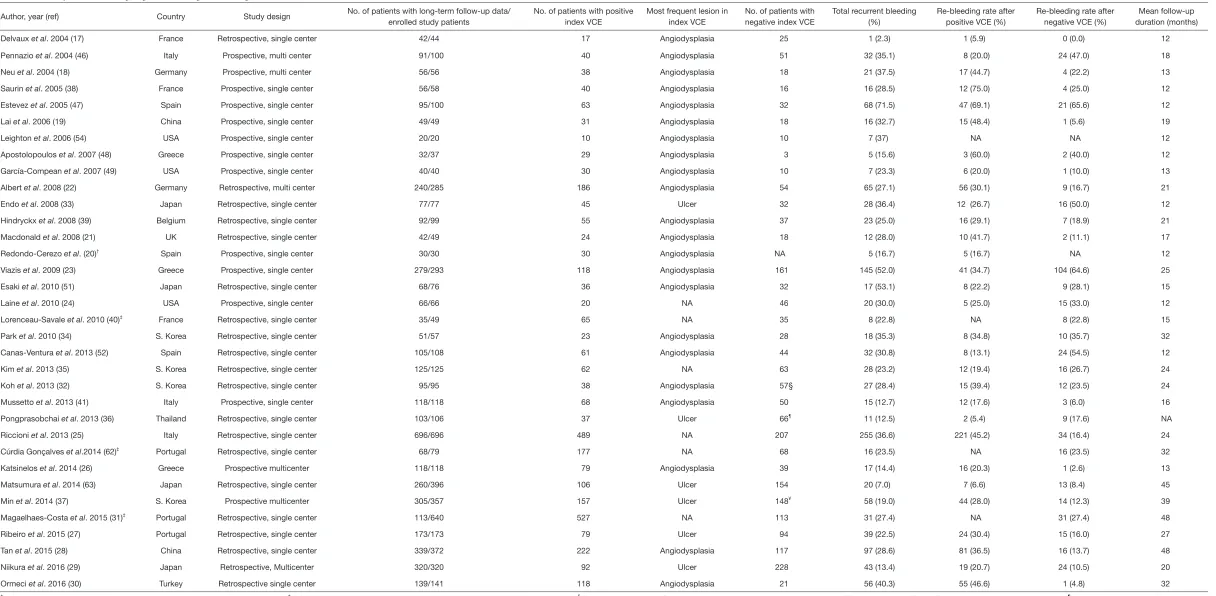Long term effects of video capsule endoscopy in the management of obscure gastrointestinal bleeding
Full text
Figure




Related documents
Simulated surface temperature evolution for the Last In- terglacial (LIG-_) and the Holocene (8–0 kyr BP, HOL-tr) in north- ern high latitudes (60–90 ◦ N) calculated as a
We hypothesized that NICU antibiotic prescribing practice variation correlates with rates of proven infection, necrotizing enterocolitis (NEC), mortality, inborn admission, and
Among those who died during their fi nal 2010 admission or within 10 days after discharge, median total costs and length of stay did not differ according to receipt of PCC4. Median
Jing, Taisong, "The Strong Cm Lifting Problem & The Relabelling Action on The Equicharacteristic Universal Deformation Space of A P-Divisible Smooth Formal Groups Over
To date, there has been little evidence suggesting genotype-phenotype correlation in NF1, except for NF1 patients with a NF1 microdeletion in which more severe clinical
In the comparison between groups with primary and renal hypertension, significantly higher uric acid (p = 0.018) and lower HDL (p < 0.001) serum concentrations were
Figure 7.7: Comparing the mean accuracy of classification of the baseline task (Relax) to all other tasks in three settings present on the x-axis: using 5s segments, using 1s
Drug group – speci fi c correlations in rate of prescription use between Medicaid-insured and commercially in- sured children were as follows: anti- biotics, R = 0.69; ADHD